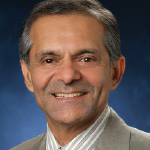If there is one thing our members should take away from this column it is this: There is a lot of work to be done, but change and success are possible if rheumatologists and rheumatology health professionals from across the country inject our voices into the public square.
Awareness must exist at many levels. We need to inform patients how small changes to their daily routines and physical activity can make a big difference in how they feel and function. We need to inform the broader healthcare community about the important role of rheumatology care in the healthcare continuum. And we need to inform decision makers about policy changes that will make a significant difference in patients’ well-being.
At the ACR, we are up to the challenge. We hope that each and every one of our members is, too, and will mobilize alongside us. Rheumatologists and rheumatology health professionals have a critical and vital role to play in today’s evolving healthcare environment. Let’s make sure to stake our claim and that of our patients.
 Sharad Lakhanpal, MBBS, MD, is in private practice at Rheumatology Associates and a clinical professor of internal medicine at the University of Texas Southwestern Medical School, both in Dallas, where he has lived and worked since 1986. He is also the 80th president of the ACR (2016–17).
Sharad Lakhanpal, MBBS, MD, is in private practice at Rheumatology Associates and a clinical professor of internal medicine at the University of Texas Southwestern Medical School, both in Dallas, where he has lived and worked since 1986. He is also the 80th president of the ACR (2016–17).
References
- Centers for Disease Control & Prevention. Arthritis in America. Time to take action! 2017 Mar 10.
- Barbour KE, Helmick CG, Boring M, et al. Vital signs: Prevalence of doctor-diagnosed arthritis and arthritis-attributable activity limitation—United States, 2013–2015. MMWR. 2017 Mar 10;66(9);246–253.
- American College of Rheumatology, Academy for Academic Leadership. 2015 workforce study of rheumatology specialists in the United States. 2016.


